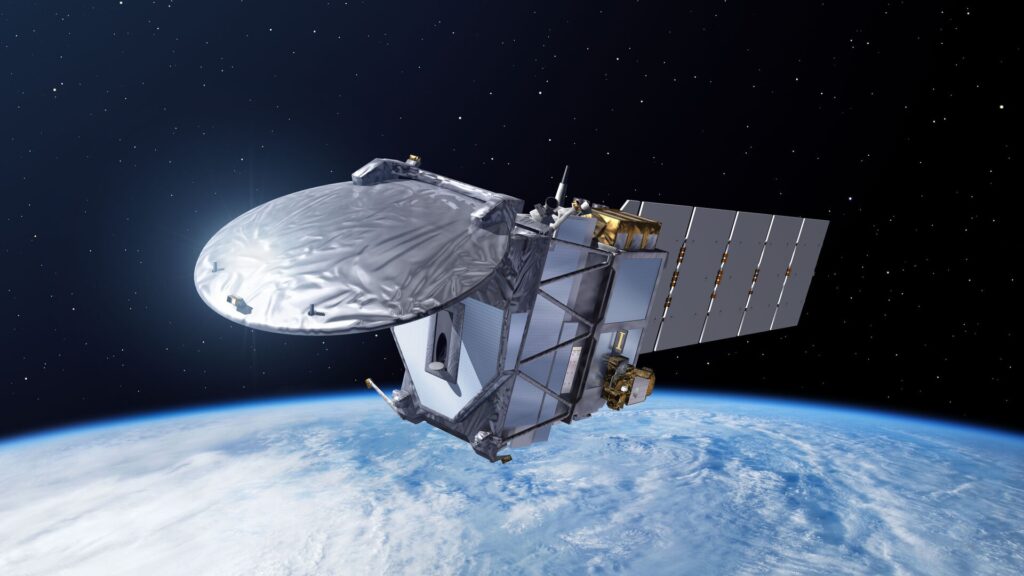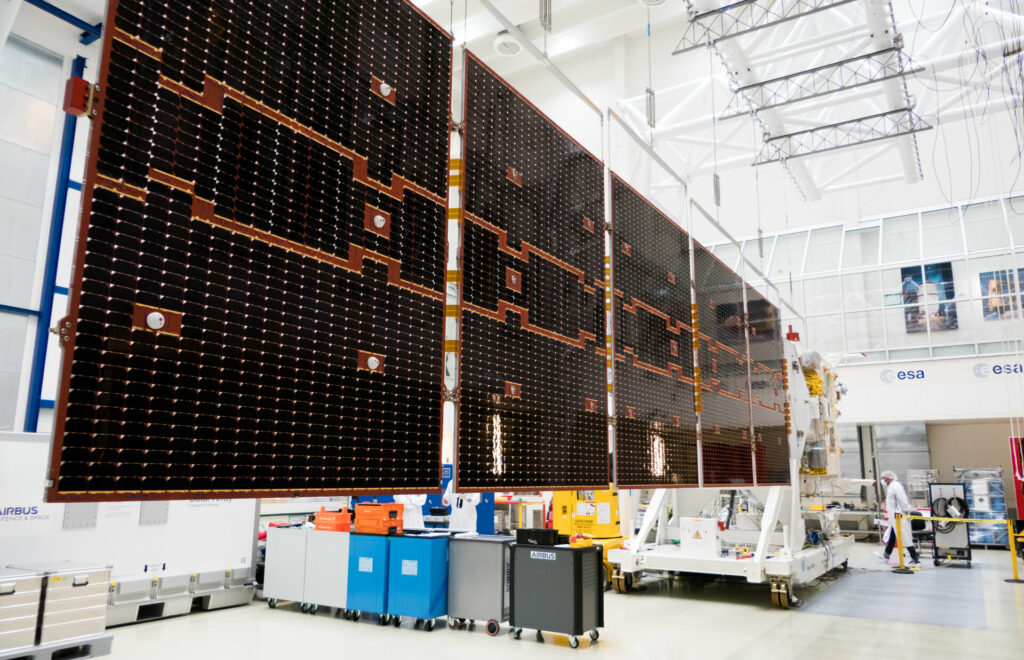The specialists of the ESTEC test center in the Netherlands have successfully deployed the solar panel of the EarthCARE satellite. In the near future, they will begin a new series of tests, during which they will check the ability of the device to withstand starting vibrations and temperature changes.
Main objectives of the EarthCARE mission
EarthCARE (Earth Clouds, Aerosols and Radiation Explorer) is a joint European-Japanese project implemented under the Earth Explorer Program. The main purpose of the mission is to study clouds and aerosols in the Earth’s atmosphere. The data collected by the satellite should give scientists answers to a number of questions that have been of interest to them for a long time. For example, about the role of clouds and aerosols in reflecting sunlight back into space, as well as retaining infrared radiation emitted by the Earth. The delicate balance between these two values allows our planet to maintain a stable temperature regime.

To fulfill its tasks, EarthCARE will be equipped with a set of four scientific instruments, including an atmospheric lidar, a Doppler radar for studying clouds, a multispectral camera and a radiometer.The devices will be supplied with energy from an 11-meter solar panel. Due to its large dimensions, it will be folded during launch and deployed after the satellite enters the target 400-kilometer sun-synchronous orbit.
Successful deployment of the solar panel
After the assembly was completed, EarthCARE was delivered to ESTEC, Europe’s largest test center for space technology. As part of the first test, engineers tested the mechanism of opening the solar panel of the device. To compensate for the effects of Earth’s gravity, cables were used to hold its elements. The test was a success.

The next step will be a series of vibration and thermal vacuum tests. The first will test the device’s ability to withstand vibrations that will occur during its launch. The second will certify its ability to withstand temperature changes in an airless space.
At the moment, the launch of EarthCARE is scheduled for September 2023. Initially, it was planned to use a Soyuz rocket for this mission. But after the rupture of relations with Russia, ESA will have to use a different carrier. Most likely, a new Ariane 6 rocket will be used to launch EarthCARE.
According to https://www.esa.int
Follow us on Twitter to get the most interesting space news in time
https://twitter.com/ust_magazine

